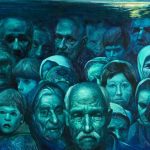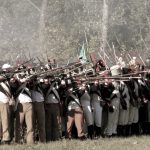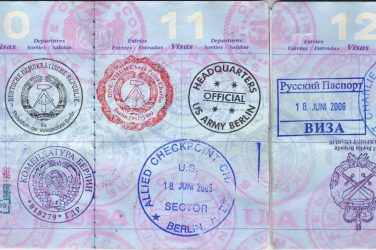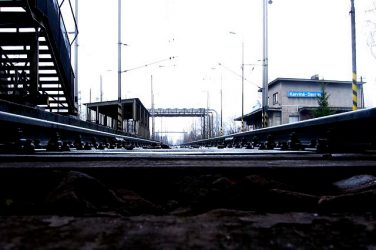
In years from now, will we look back and identify someone whose life and work will have defined the zeitgeist of our generation? Is there someone among us today who will deserve a biography that will tell about his or her days and, with it, describe the history of our times? In other words, will the first decades of the XXI century have an icon to define it in the same way as the first half of the last century had the photographer Robert Capa?
For two decades – between the 30s and the 50s – his black and white images of wars around the world shaped people’s imagination about the battlefield, bringing their minds to the forefront. He gave a face and a name to the darkest episodes of mankind and, more than that, defined an entire generation, the one in between world wars and the beginning of the bipolar world that came after it.
Born in Budapest in 1913 as Andre Friedman, “Capa” was a Hungarian Jew who fled the horrors of persecution and poverty for most of his young years. Resettling in Vienna, Prague, Berlin, trying to make it in Paris or sleeping in a different bed a night in London, he was a true European of the early XX century. With borders in constant change and national identities that often become a reason to hide, the fast-paced, dangerous life gave Capa a sharp sense of opportunity.
Beyond Capa’s world-famous photos, it was with Blood and Champagne, the brilliant biography by Alex Kershaw, that I dove into his personal story. To say that he was always at the right place at the right time would be ironic given the circumstances of his death but, without a doubt, the lenses of his Leica were the witness of prime chapters of History as we know it. Proofs are not few. His first photojournalism breakthrough was to cover Trotsky’s final speech, in Copenhagen, in November 1932. Although many other photographers were also at the venue, Capa’s photos stood out for being the most dramatic, so close he got to Trotsky. The intensity and intimacy he managed to grasp would become the trademark of his future years. Somehow, he was a step ahead of the others.

Perhaps the most interesting aspect of his career is the fact that Capa literally invented himself. While in Paris, he had a great idea with his first wife: in order to be more seductive to the editorial market, they started an association of three people. His wife, Gerda, would be the secretary and sales representative; the second would be Andre Friedman, working in the darkroom and, finally, the third person would be a rich, known American photographer named “Robert Capa”, who was allegedly visiting France at the time. Capa at the time was a fake alter-ego, but soon Andre Friedman took over the persona and never let it go. The plot worked out so well Gerda wouldn’t sell Capa’s photos to any French newspaper for less than 150 francs a piece — three times the average at the time.
Reading well-written biographies has always brought me a sense of intimacy with the person in question. By getting closer to Capa, I learnt that gambling, morning baths, women, champagne and danger were his addictions, without which he could not live. Photography, paradoxically, was not exactly his main talent. In fact, Capa wasn’t the most innovative or technically advanced photographer if compared to his Magnum colleagues. He was not known for going for “crazy angles” or technical experiments. In fact, he was regarded as eye-level photographer. However, his real talent was his bravery. Crawling under fire, moving from trenches to trenches, dodging bullets and grenades or disembarking with the Allied troops in Normandy, he was there, like no other photographer was.

Writer John Steinbeck, one of his best friends, once said that “Capa knew what to look for and what to do with it when he found it. He knew, for example, that you cannot photograph war because it is largely an emotion. But he did photograph that emotion by shooting beside it. He could show the horror of a whole people in the face of a child. His camera caught and held emotion.”
After gambling with his life for two decades, the bill finally arrived in Vietnam in 1954, in the form of a landmine. Thanks to his complete need to live on the edge and to get as close as possible from the scenes of carnage, his photos showed to the world the darkest side of humanity. With life and major world events intrinsically entangled, Robert Capa was the man who defined his times.
Teaser photo: Ur Camera (Flickr); Licence: CC BY-NC-ND 2.0










